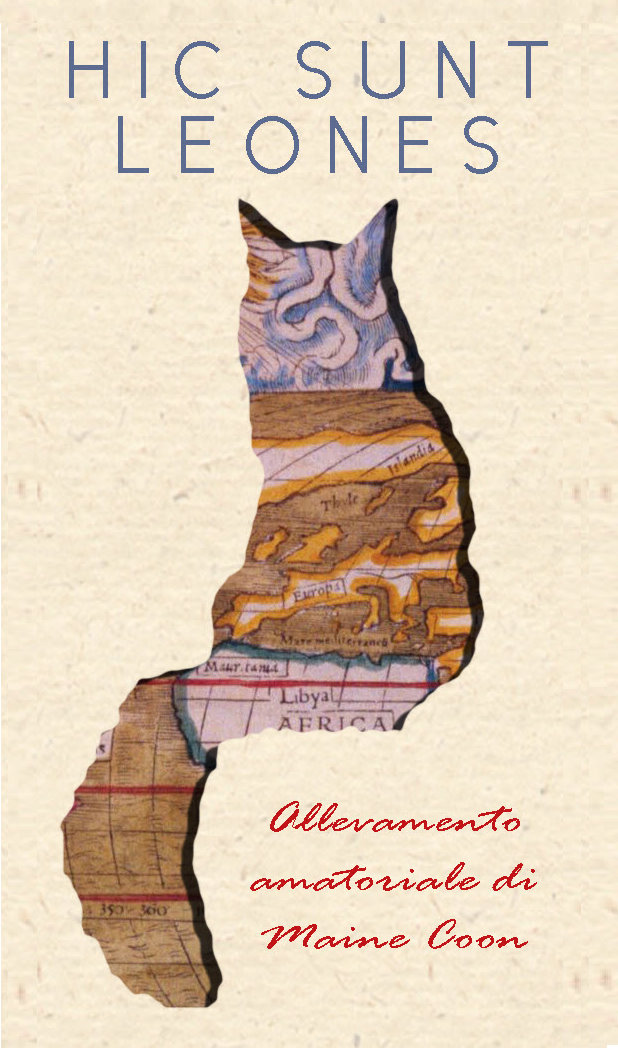The Maine Coon is one of the oldest natural breeds in North America, specifically "native" of the state of Maine, where he is the official state cat. His name comes from Maine, the state of New England when he was spotted, and from Raccoon, because his tail is very similar to the raccoon one.
Many legends surround the origin of this particular cat. At the beginning of the century, the most widespread one narrated that, for its large and hairy ears provided with tufts and for his big and ringed tail, the Maine Coon was the result of a cross between a lynx and a raccoon.
This theory, absurd of course, has however helped to fuel numerous folk tales about this cat breed.
There are those who wanted at all costs to give even a royal aura to this "rustic" cat, making him descend from six Angora cats rescued during the French Revolution by Queen Marie Antoinette, who sent them to Wiscasset, in the American state of Maine. The origins of the Maine Coons have created so many legends and speculations, none of which can be proven. The most likely, although less pictoresque, hypothesis is that the Maine Coon is descended from the pairings of local short-haired domestic cats and long-haired breeds brought overseas by English seafarers. According to some, the Maine Coon would have Nordic ancestors, the same progenitors of the Norwegian Forest Cat, arrived in North America in the year one thousand following the Vikings' landing in Newfoundland. According to others, the origin of the Maine Coon dates back to the colonial period, when the settlers' ships from all around the world docked on the Northeast American shore bringing cats to fight mice. They were cats of every sort, appreciated by sailors depending on their ability to hunt mice rather than their beauty. However, among those "cats", all equals yet all differents, there was likely even some ancestor of current American cats.
The first official report of a Maine Coon dates back to 1861, with a mention by Mrs. Pierce about a black and white cat called "Captain Jenks of the Horse Marines."
In Italy the Maine Coon appears only in 1986 on a sector monthly magazine. Since then, the spread of the breed is growing and Maine Coons have become successful players in cat exhibitions.
Features
The Maine Coons are majestic cats. Their weight varies from 7 to 12 kg for males (15-26 lb) and from 5 to 7 kg for females (11-15 lb). More than a century ago, the Maine Coons were already appreciated for their strength, beauty and ability to adapt to the harsh winters of New England.
Everything about Maine Coon reveals his physical adaptation to a harsh climate.
His body is big, long, rectangular and muscular, with solid bone structure. Also, the broad chest and the strong, muscular neck, especially in males, give the cat a strength and powerful look. His coat is shiny, dense and water-resistant, different from that of any other breed. His fur is longer on ruff, stomach and back legs to protect it from wet and snow, while is shorter on the back side and neck to defend it from the tangled undergrowth. The long and bushy raccoon-like tail can be curled around his face and shoulders for warmth and protection from wind and blowing snow and it can even be curled around its backside like an insulated seat cushion when sitting down on a ice surface. Compared to those of other breeds, Maine Coon's ears are heavily furred with extra long tufts of fur growing from inside, to help keep them warm, and mobile, in order to better hear forest's sounds. Its large paws, rounded and with tufts of fur, facilitate walking on snow and are often compared to snowshoes. His eyes and ears are big for better sight and hearing, moreover they are useful in hunting and escape predators. The long and square muzzle allows the cat to easily grab the prey and drink water from rivers or ponds.
The breed colours vary widely and all colours are accepted except: Chocolate, Cinnamon, Lilac, Fawn in any combination (tabby, with or without white) and colourpoint factor.
The average life of a Maine Coon is usually about 13-15 years.
Behaviour
Despite his imposing bearing, Maine Coon cat is a docile animal. It is very attached to his owner as well as the whole family, and has no problem to cohabit with its own kind (both Maine Coons and other breed's cats) or with a dog. An uncommon feature Maine Coon cats have is that they are comfortable with water, as the breed Turkish Van, which likes water and move nimbly in it.
His ideal owner has a free spirit, just like him. This majestic cat is proud and independent indeed.
For this reason he can be free to go outdoors. Even if its absence can last 24 hours, he usually comes back home. You should not be deceived by his size: the Maine Coon is not aggressive. Sometimes, while the kittens are playing, it may happen they scratch or bite, but they don't do it on purpose. He is also an extraordinary playmate for children. He is lively, curious and playful.
His size makes it self-confident with other animals. Given its look, you would expect much of a voice, but it is not very talkative, neither during the breeding season. He can give much love to whom who treats him kindly, but he doesn't like chaos, mushy stuff and being held.
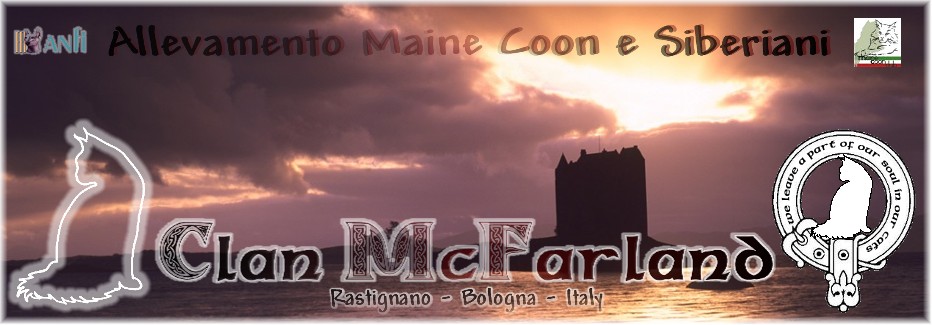



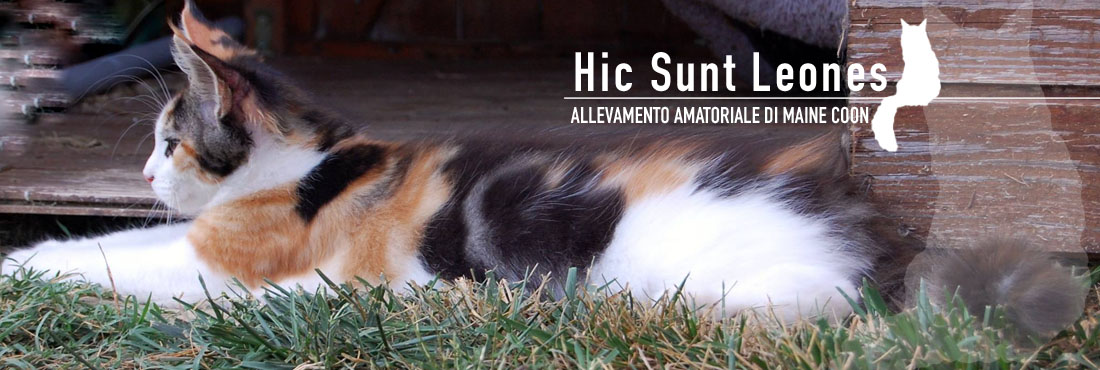
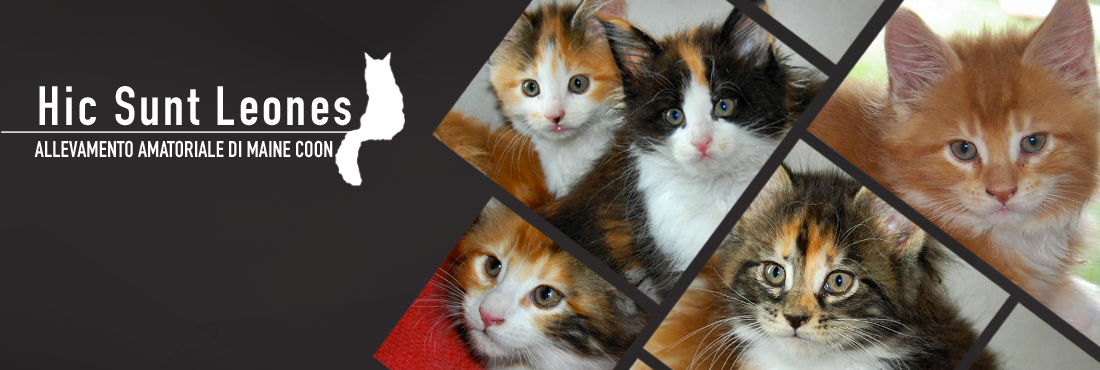


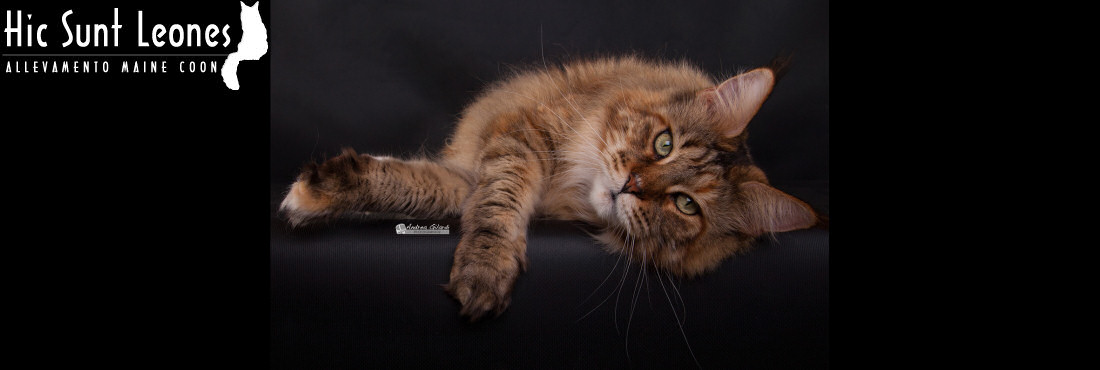
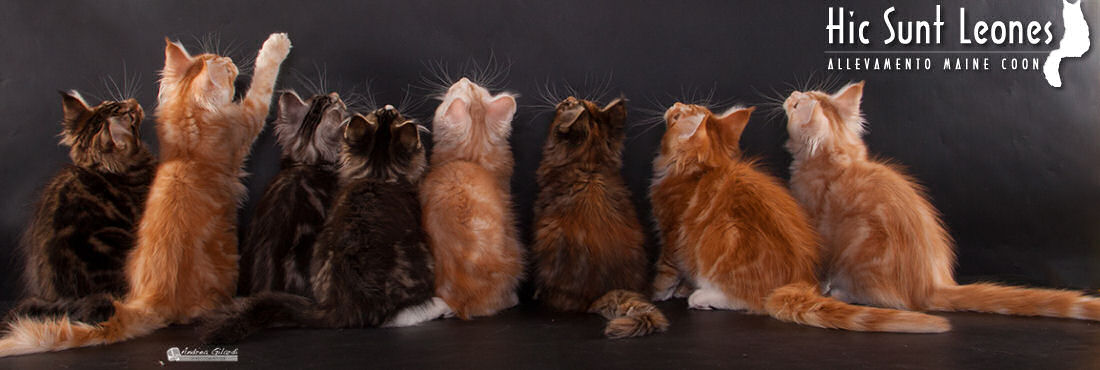
 Italiano (IT)
Italiano (IT)  English (UK)
English (UK) 